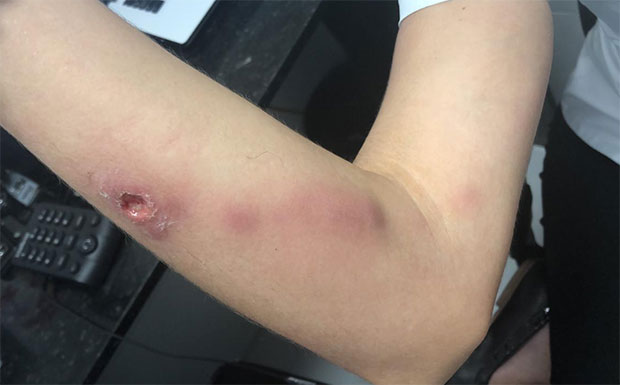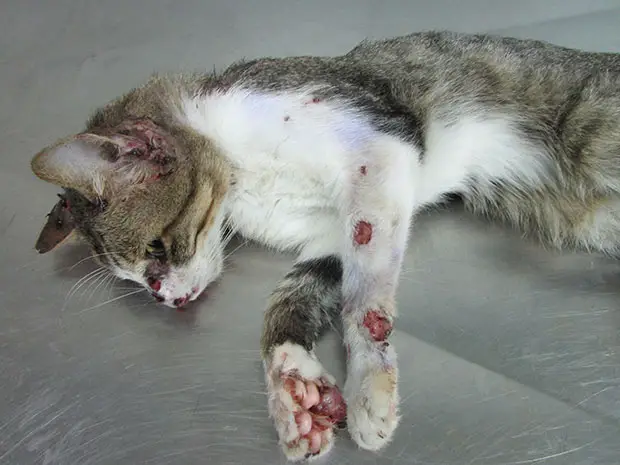Cat-transmitted sporotrichosis has emerged as a zoonotic epidemic and major public health threat in Brazil with the potential of spreading to the United States, warned the Centers for Disease Control and Prevention in a March 1 teleconference.
Ian Hennessee, PhD, an Epidemic Intelligence Service officer in the Mycotic Diseases Branch of the CDC, explained during the monthly Zoonoses & One Health Updates Call that cat-transmitted sporotrichosis was first identified in Brazil during the 1980s. Since then, human and feline cases of CTS have been reported across Brazil and in neighboring Chile and Argentina.

Dr. Hennessee also noted that a study in the March 2023 issue of the journal Medical Mycology Case Reports describes the first three known human cases of CTS outside South America, all in the United Kingdom.
“Cat-transmitted sporotrichosis is certainly a concern for the United States,” Dr. Hennessee said. “Its establishment would be a threat to stray and domestic cat populations and also a risk to veterinarians and cat owners.”
Sporotrichosis is caused by a group of fungi from the Sporothrix genus, which has a worldwide distribution, particularly in tropical and subtropical regions.
Cats carry high loads of Sporothrix brasiliensis that are easily transmitted to other cats and to humans and dogs. The fungus spreads via bites and scratches and through contact with lesions, droplet exposure, and inhalation.
According to the CDC, skin infection is the most common form of sporotrichosis. Infection occurs when the fungus enters the skin through a cut or scrape, usually after contact with contaminated plant matter. In humans, skin on the hands or arms is most commonly affected.

According to the journal article, sporotrichosis “may progress to disseminated disease, especially in the context of immunosuppression, and may manifest as osteoarticular, conjunctival or meningitic disease.”
The U.K. cases described in the journal are of a 63-year-old woman, her 30-year-old daughter, and their veterinarian, in his late 20s. Each had contact with a 9-year-old male domestic cat rescued by the mother and daughter, who are from southeastern Brazil and had brought the cat with them to the U.K. three years previously.
The cat developed scalp and paw lesions four months prior to the human cases. The family took the cat to the veterinarian, who performed three biopsies of the frontal scalp and chin regions. The histology was reported as pyogranulomatous inflammation, with fungal staining confirming fungal structures with occasional areas of budding consistent with a zoonotic fungal infection such as Sporothrix spp.
The cat appeared to improve on itraconazole but died from an unknown cause six months after its initial appointment. To reduce further potential transmission from fomites, the cat was cremated with its bedding, collar, and toys.
The woman, her daughter, and the veterinarian’s symptoms—small lesions either on their arms or fingers—resolved completely following itraconazole treatment. There were no ongoing public health concerns or exposures and the incident management team advised active monitoring of the three cases, the cohabiting cat, and a second veterinarian who had been bitten by the index cat but had not developed symptoms.
Dr. Hennessee encouraged veterinarians to notify their local health departments about any suspect cases or unusual sporotrichosis trends.
